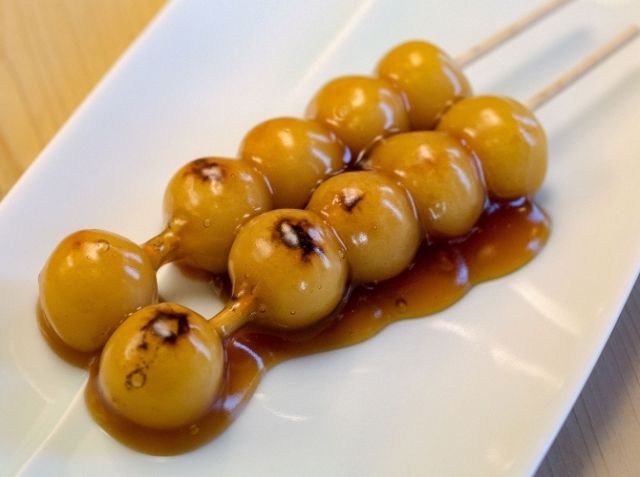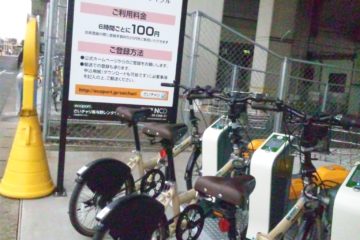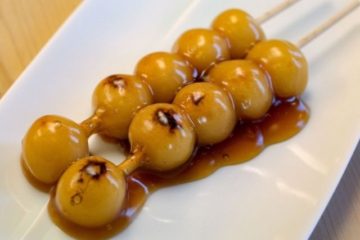Blog News about Japan 未分類
What is “dango”? Sweet or Food in Japan

The Debut of Four-Mon Coins Determined the Number of Dango Per Skewer
The various colored confection on display at Japanese-style confectionary shops dazzle the eye. Unlike expensive, high-quality confection, the simple looking, unspectacular kushi dango (skewered dumplings) as represented by mitarashi (sugar and soy sauce flavor) dango is popular with its endearing taste. Its price is also reasonable making kushi dango a friend of the common person.
Dango has an extremely long history. Dango made from acorn flour can be traced back to the Jomon period (10,000 to 400 B.C.). However, it is said that “Kara kudamono (Tang confectionary)” brought back to Japan by Japanese envoys sent to China during the Tang dynasty can be regarded as the origin of the current dango.
The kushi dango intended for common people, like mitarashi and an (bean paste) dango, made its appearance during the Edo period (1603 to 1867).
“Edo Kaimono Hitori Annai (Edo Shopping Guide)” published in 1824 lists 2622 famous shops in Edo. Of the shops that handled foodstuffs, the majority were confectionary shops. The book lists 120 confectionary shops. In particular, kushi dango that could be easily picked up by hand and eaten was popular as a quick snack. It was enjoyed at tea shops on the streets or at the entrances to temples and shrines.
Generally speaking, most kushi dango consist of four dumplings on a single skewer. According to “Kashiyawa,” a collection of essays, written by the feudal lord Matsuura Seizan during the Edo period, the four-dumpling kushi dango made its appearance during the Meiwa era (1764 to 1772), i.e., in the middle of the Edo period.
Why was the number of dango per skewer set to four? The reason is connected to the appearance of four-mon coins (mon: unit of money) that were newly minted at that time.
Up until that time, kushi dango commonly consisted of five dumplings and sold for five mon per skewer. That is, the price was one mon per dango and kushi dango was priced at five mon because there were five dango on a skewer. It was thus easy to understand.
However, after the four-mon coins made their appearance, an increasing number of customers began to quickly pay with a four-mon coin at the crowded shops and walk away with a five-dango skewer. Because of this, the shops reduced the number of dango per skewer to four out of necessity.
Thus, the change in the number of dango hides the drama of an offensive and defensive battle between the tough common people and the shop owners who would not be defeated.


